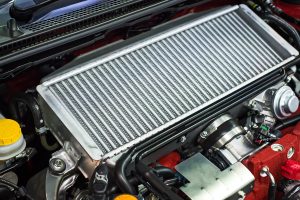
Your engine has to operate at a high temperature to work effectively. Excess heat can damage critical parts of your engine. To prevent this, your Lincoln has an efficient cooling system centered on the radiator. If your radiator is worn or damaged, you’ll need a radiator repair at your Lincoln dealer. These are some of the signs your radiator could be damaged.
Signs You Need a Radiator Repair at Your Lincoln Dealer
Damaged Radiator Cap
The cooling system is highly pressurized to operate at high speed. The radiator cap is situated on top of the radiator and controls the system pressure. Due to the high pressure in the system, the cap is securely attached and protected by two seals to ensure a perfect airtight seal. If the pressure in the system rises too high, the cap opens to bleed off the excess pressure and then closes.
In time, the heat and pressure can damage the seals, and coolant can leak out. This leak not only loses coolant but also drops the pressure and slows down the cooling system. If you examine the cap and see white streaks, this is a sign of coolant leaking. We can fix this problem by testing the cap and seals and installing new ones if necessary.
Coolant Leak
Coolant is a mixture of water and antifreeze. Its job is to shift the heat generated by your engine into the radiator. It does this by flowing through the engine and absorbing heat radiating from the hot engine components. When the coolant reaches the radiator, it enters the radiator tubes and is rapidly cooled as air flows over the tubes.
A coolant leak disrupts this process and can cause your engine to overheat. A loss of coolant reduces the speed and amount of heat that can be absorbed. As the heat level in the engine increases, your engine temperature will rise. Coolant can leak from various places, including worn hoses, a cracked radiator, or the radiator cap that was mentioned above. We’ll find the source of the leak and seal it.
Loose Hose Clamps
The radiator is connected to the rest of your cooling system by two rubber hoses, one and the top and the other at the bottom of the radiator. These hoses are made from toughened rubber and are designed to withstand high temperatures for prolonged periods. The hoses are securely attached to the radiator by strong metal clamps.
The subtle movements in the engine caused by driving can loosen one or both of these clamps, and coolant will spill out. This causes an immediate increase in engine temperature. Our technicians will examine the hoses and tighten or replace them, depending on the situation.
If your engine temperature seems too high, call us at Bob Maxey Lincoln.





